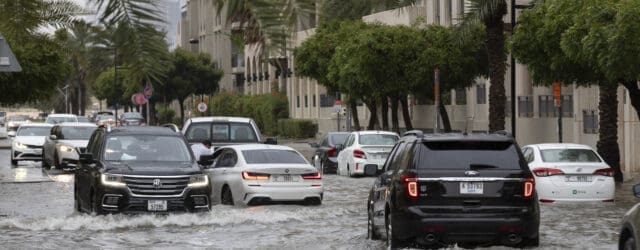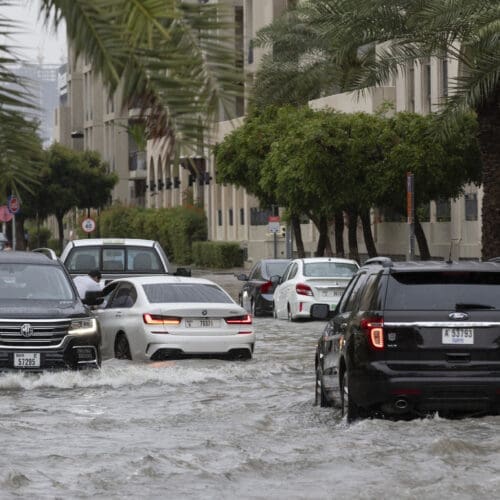HISTORIC RAINFALL CAUSES DAMAGE IN THE UAE: NOW THE SUN’S COME OUT – WHAT’S NEXT? PART 3
July 2024THE CONSTRUCTION INDUSTRY
In our first article discussing ‘what comes next’ following the severe flooding events in the Emirates, we looked at the impact on insurers and insurance claims. A link to that article can be found here.
In this article we shift our focus to contractors.
Impact on Construction:
The severe weather impacted many construction sites throughout the UAE, causing damage to plants, suppliers’ materials, and disruption to the movement of labor.
By way of reminder, there may be relief available to contractors in the most commonly used contract in the region, the FIDIC Red Book.
Delay
A contractor has a right to claim an extension to the Time for Completion (EOT) in the event of “exceptionally adverse climatic conditions” pursuant to Sub-Clause 8.4 (c).
While there is no definition of “exceptionally adverse climatic conditions” within the contract itself, the FIDIC Contracts Guide (2000) provides some assistance referring to an event “which has a probability of occurrence of 4 to 5 times the Time for Completion of the Works”.
Based on this guidance, if the planned duration of the works was four years, an event which occurred no more than once every 20 years could arguably be deemed an exceptionally adverse climatic condition.
It follows that the recent floods in the UAE, having been assessed as a once in a 75-year event, were arguably an exceptionally adverse climatic condition in relation to most construction projects in the UAE.
Employer’s Risks – EOT Claims
If the adverse climatic conditions clause has been removed from the contract (which is often the case in the Middle East) there may be an alternative route to obtain relief through Sub-Clause 17.3 (h). This provides an entitlement to an EOT if the contractor suffers delay and/or incurs Cost arising from an instruction from the Engineer to rectify the damage or loss due to “any operation of the forces of nature which is Unforeseeable or against which an experienced contractor could not reasonably have been expected to have taken adequate preventative precautions”.
To rely on Sub-Clause 17.3 (h), a Contractor would need to establish that it has been instructed by the Engineer to rectify the damage or loss, and that the events were either:
- “Unforeseeable” (as that term is defined in the Contract); or
- That the Contractor “could not reasonably have been expected to have taken adequate preventative precautions.
“Unforeseeable” is defined as “not reasonably foreseeable by an experienced contractor by the date for submission of Tender”. Similar to the guidance provided in respect of adverse climatic conditions, the FIDIC Contracts Guide also references the statistical frequency of any event, as compared to the Time for Completion.
As to the second limb, establishing that an experienced contractor “could not reasonably be expected to have taken adequate preventative precautions” will turn on matters of fact. In circumstances where the rainfall was predicted by the local authorities a few days before the flooding occurred, there may be reasonable arguments that some mitigation measures could have been undertaken. Whether these warnings, and the mitigation measures which could have been undertaken allowed sufficient time to protect the works will be a matter to be addressed in any claim. In some of the worst cases of flooding, it is hard to see what could have been done to protect the sites from the volume of water that flowed through them.
Force Majeure?
A claim for Force Majeure under Sub-Clause 19 may offer a source of relief for time (although not cost), but the threshold to establish such a claim is significantly higher compared to Sub-Clause 8.4. While the latter only requires a contractor to prove an adverse impact on the construction schedule, Sub-Clause 19 requires the contractor to demonstrate that it is prevented from performing any of its obligations by Force Majeure.
A mere disruption to the progress of the works may not suffice – the contractor must have been ‘prevented’ from performing its obligations.
Another potential issue is that Sub-Clause 19.1 (v) provides a non-exhaustive list of exceptional events or circumstances which fall into the category of ‘natural catastrophes’. These include earthquakes, hurricanes, typhoons and volcanic activity. Whether a flood is a severe enough event to also be classed as a natural catastrophe is unclear. There is certainly an argument to say that it is, but this will be entirely dependent on the facts and how severe the flooding at the Site was.
Additional Costs
If a contractor is able to establish that the flooding at a project was an Employer’s Risk, and, subject to any amendments, that it had (i) been instructed by the Engineer to rectify loss and damage, (ii) incurred Cost from rectifying loss or damage, and (iii) provided notice under Sub-Clause 20.1, the contractor may be entitled to an adjustment to the Contract Price in accordance with Sub-Clause 17.4 (b), including an element of profit.
Looking Forward
In our next article in the series, we will consider Employer and Contractor claims, where liability is likely to be placed, and who may be at risk.
In the interim, please reach out to Claire Miller, Lyndon Richards or Jeremy Russell with any queries, or to feedback your comments.
Download PDF









